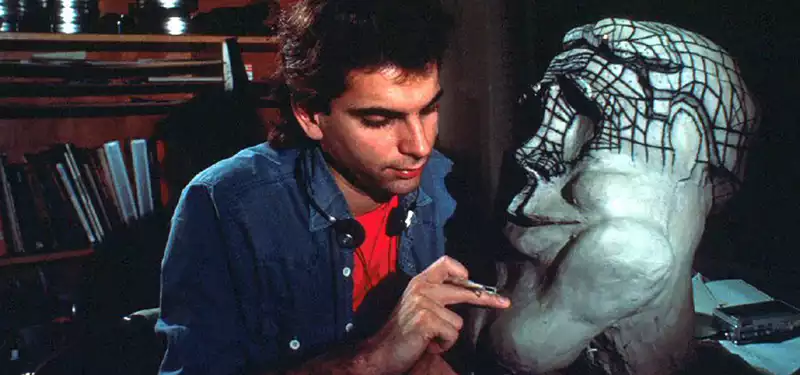Dec 5, 2023
Daniel Langlois, founder of Softimage and computer graphics pioneer, was found dead in Dominica and several people were detained.
Daniel Langlois, a pioneer in the computer animation industry, was found dead last weekend on the Caribbean island of Dominica. His body was found in a burnt-out car with his partner Dominique Marchand. Police are treating their deaths as a "possible homicide."
Langlois and Marchand owned the Coulibridge, a luxury eco-hotel on the island. Police believe that the couple were ambushed and shot at, and their car fell into a ravine before bursting into flames.
At least four people have been taken in for questioning or detained, including Jonathan and Victoria Lehrer, a New Jersey native who owned a nearby chocolate plantation. Langlois had filed a lawsuit against Lehrer and his wife, who had refused to allow them access to the public road leading to Langlois' resort.
Soufriere village politician Denise Charles-Pemberton told a national radio channel that Langlois and Marchand played an important role in the community:
The past few days have been incredibly heavy for our constituency. It is hard to put into words the loss of two members who have been central to the development of our community and have been responsible for its spirit and togetherness. Daniel and Dominique may be known for their world famous eco-resort in the village, but to the people of the Soufriere constituency, and to me, they were kind, loving, and truly community oriented people. They truly loved the people of our constituency and had great plans for its development. I remember after the devastation of Hurricane Maria, I called a meeting and called on every group, council and developer to submit a rebuilding plan. Daniel and Dominic remained committed and offered their support whenever approached, especially for conservation and sustainable projects.
After Hurricane Maria in 2017, the foundation run by Langlois funded the reconstruction of a local elementary school and pier.
Born in 1957 in Quebec, Canada, Langlois earned a bachelor's degree in design from the University of Quebec in Montreal (UQAM). He began his career at various animation studios in Montreal, including the National Film Board of Canada (NFB), where he contributed to the technical production of René Jodin's digital animation Rectangle & Rectangles (1984).
"He explored and redefined the boundaries of computer animation [at the NFB] and, with his extraordinary innovative spirit, created a technology that revolutionized filmmaking," Suzanne Guèvremont, director of the National Film Production Board of Canada, Inc. said in a statement. We will always remember his enormous generosity and the importance he placed on education and supporting emerging talent." His contribution to the film industry is immeasurable."
Another important project to which Langlois contributed was the 1985 film Tony de Pertree, an early and ambitious experiment in CG dialogue and human animation. The film caused a sensation at the SIGGRAPH computer graphics conference. Time magazine said that the filmmakers "may have achieved a breakthrough in digitized characters that human audiences can relate to." John Lasseter, a juror at SIGGRAPH that year, said at the time: "In a few years, Tony de Peltree will be recognized as a landmark, the first computer-animated work with realistic, flesh-colored characters.
After Tony de Peltrie, Langlois animated the NFB film Transitions. The film was shown in the Canadian Pavilion at the 1986 International Exposition in Vancouver, where it was viewed by 1.75 million people over a six-month period.
Frustrated with the current state of computer graphics software, Langlois came up with the idea of creating his own. He founded Softimage in 1986.
"It's a classic story," Langlois told a television reporter in 1994. 'I was an artist who was never satisfied with the tools that were put in front of me. [I tried to talk to other companies to create such a tool, but most of them were pure engineers and didn't understand what I was talking about. So I decided to build the tool myself. Because as a user, I could define the tool that should be made for the user."
In 1991, Softimage became the first CG software package to introduce inverse kinematics and became the most dominant CG animation package of the early to mid-1990s. Industrial Light & Magic, the company that created the " Industrial Light & Magic quickly applied Softimage's new IK capabilities to the dinosaurs in Jurassic Park. Other iconic visual effects-heavy films of the era used Softimage, including "Titanic," "Mask," "Independence Day," "Men in Black," "The Matrix," "The Fifth Element," "Jumanji," "Flubber" and "Death Becomes Her. Softimage is used in many of the visual effects-heavy films of this era. George Borshkov, who was involved in the development of the "Bullet Time" effect in "The Matrix," said that without Softimage's software, this effect would have been "impossible.
Langlois sold the company to Microsoft in 1994 for $130 million. The company was then owned by Avid Technology from 1998 to 2008, then by Autodesk, which discontinued the software in 2015. The following video is a solid history of Softimage, explaining what made it special and how Softimage changed as ownership changed.
Langlois was recognized for many accomplishments during his life, including the Oscar for Science and Technology, honorary doctorates from the University of Sherbrooke, McGill University, Concordia University, UQAM, and the University of Ottawa. 1999 he was appointed to the Order of Quebec and the following year to the Order of Canada Officer The following year he was appointed Officer of the Order of Canada. Last month, the Dominican government presented Langlois with the Order of Merit.
"The Dominican government has given Langlois the Order of Quebec's Order of Merit for two reasons: first, to foster critical awareness of the impact of technology on ourselves and our natural and cultural environment; second, to promote scientific research and the exploration of aesthetics that reflect the environment we shape; [and] third, to encourage the development of a new way of thinking about the environment.
.



Post your comment